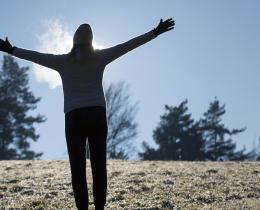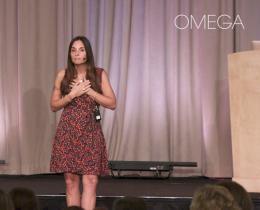Omega: What is the biggest challenge for beginning meditators?
Culadasa: The biggest obstacle of all, without question, is establishing a regular daily practice of a reasonable length. The most important thing is consistency. I encourage people to meditate every day, no matter how long they can do it. Then I encourage them to work their way up to 45 minutes. And I don’t mean just sitting there and daydreaming—I mean actually meditating.
Omega: It seems like the general trend is to figure out how little time we can meditate and actually benefit from it—some suggest 12 minutes. Is meditating for a short time beneficial?
Culadasa: It seems like the introduction of meditation into the mainstream has gone the way much else does—we want to know how little we can get away with to get the benefits. Essentially, the longer you go, the more different your experience is.
Physical training is a good example. You can do a high intensity workout for 10 or 12 minutes a day and get into pretty good physical shape. But you’re not going to find an Olympic athlete that trains for 10 minutes a day. The level of someone’s athletic prowess is directly related to the amount of time and effort they put into training.
The same is true for meditation. Sure, you can get some benefit from 12 minutes a day, but if something traumatic happens in your life that practice won’t help much. But if you take it seriously and do it consistently, when terrible things happen in your life your practice will get you through them.
Omega: Do you remember your first experience with meditation?
Culadasa: Oh, I do quite well. I had no access to anybody who knew anything about meditation, so I bought books from the Vivekananda Vedanta Society of Chicago by mail order and tried to teach myself to meditate using those books. Why I persevered so long I don’t know, but I did for the better part of two years, eventually trying to do it with another graduate student who was also interested in meditation. It was a frustrating experience trying to do it without a teacher.
About that time, the Beatles brought our attention to Maharishi Mahesh and TM [Transcendental Meditation] caught on. My first real experience with meditation was doing TM—I was in the process of becoming a TM teacher when I met a Buddhist upāsaka—a lay practitioner who had taken the vow to live like a monk, except he could work, marry, and raise children. He started teaching me the Mahasi style, which is the style they teach at Spirit Rock and the Insight Meditation Society. Eventually I made my way to the Theravadin and Tibetan Karma Kagyu Buddhist traditions.
Omega: You teach meditation as a 10-stage process marked by four milestones, but you say mastering each stage is not the goal. What is the goal of meditation?
Culadasa: The endgame is awakening, which means overcoming the ignorance that we live in—the ignorance that has put us so strongly out of touch with our own spirituality. The essence of that is the realization we are not a separate self—that we are interconnected and everything in the universe is interconnected. Once we drop the illusion of being a separate self, understand that experientially, and can live in that place, there arises a very powerful compassion. All the practices are leading us toward that.
The Buddha’s way of approaching people was not, “How would you like to become wise and compassionate?” It was, “How would you like to completely and permanently overcome all suffering?” Everyone starts to meditate for completely selfish reasons, even if that reason is “because I want to be awakened,” but by the time you get close to awakening, you realize there is no “I” to be awakened. There is no such thing as an awakened being, only awakened behavior.
Omega: Is it possible to awaken at any moment, not just once you’ve succeeded at each of the four stages?
Culadasa: Yes. Many people have spontaneous, limited experiences of awakening. Sometimes these are called peak experiences. A lot of my students tell me they had an amazing experience 5 or 10 years ago that changed them in certain ways but they don’t know how to get back to that place again.
Leonard Cohen sings, “There is a crack in everything. That’s how the light gets in.” The illusion that we live in is full of cracks. Every now and then we’re fortunate enough to notice the crack and see through it. This is why I think every human has the potential for awakening.
The Buddha himself described awakening as happening over four stages. Each stage is a deepening of insights that you’ve already experienced. But you never stop becoming more awakened. Insights never stop. I don’t expect them to stop deepening for me until I draw my last breath, and I don’t want them to.
Omega: What can someone do if they feel like they’ve plateaued or are stalled?
Culadasa: I’ve reached plateaus many times and thought, “Well, that’s it. I’ve got it all figured out. I’m living my life from this wonderful place. I can’t imagine there’s anywhere else to go.” And I’ll be standing in the shower in the morning and all of a sudden I realize something that just opens me up to how much more there is yet to understand, and how much scope there is yet to become more fully awakened and realize my spirituality. We hit plateaus, but if we stay with it, suddenly a door will open and we’ll say, “Wow. I’m right at the beginning again,” and it’s exciting and wonderful.
Omega: How can you take meditation off the cushion and into your life?
Culadasa: There’s a reason they call this “practice.” We’re practicing the ability to be mindful in daily life. We develop the skills on the cushion so we can apply them off the cushion. To apply the virtues of Buddhist practice like right speech, right action, and right livelihood, you have to have enough mindfulness to recognize when you’re not practicing them.



